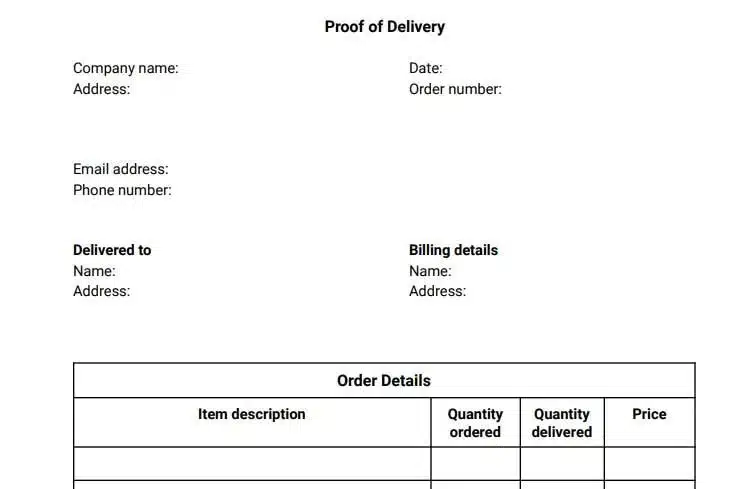In today’s increasingly globalized trade environment, international logistics plays a vital role in linking producers with consumers around the world. However, the transportation process is complex, involving multiple parties—each with distinct names, roles, and responsibilities. A clear understanding of these roles is crucial to ensuring the smooth and efficient movement of goods across borders. Terms like “shipper,” “consignee,” “final consignee,” and “notify party” are frequently used in international shipping, but their legal and operational meanings can be confusing. This article aims to clearly define these key roles and provide a detailed analysis of their differences and relationships, helping readers navigate international freight logistics with greater clarity and confidence.

The Difference Between Shipper, Consignee, and Notify Party
These three parties serve distinct roles in the international shipping process:
- Shipper: The shipper is the party who initiates the shipment—typically the seller or sender. They are responsible for preparing the goods and handing them over to the carrier for transport.
- Consignee: The consignee is the party legally entitled to receive the goods at the destination—usually the buyer. To claim the goods, the consignee must present the appropriate transport document (such as a bill of lading). Only the party named as the consignee on the document has the legal right to collect the shipment.
- Notify Party: The notify party is the person or organization that the carrier must inform when the goods arrive. While they are notified of the arrival, they do not automatically have the right to receive the goods unless they are also listed as the consignee or have been authorized by the consignee. The notify party’s main role is to receive updates and coordinate the next steps, often serving as a freight forwarder, customs broker, or logistics agent working on behalf of the consignee.
What Is a Shipper?
A shipper is a person or company that delivers goods to a carrier for transportation. In most cases, the shipper is:
- The seller or exporter of the goods
- The party that enters into a contract with the carrier to arrange the shipment
- Responsible for providing accurate details about the cargo, including all necessary documentation for transport and customs clearance
The shipper plays a critical role at the beginning of the shipping process, ensuring that the goods are properly prepared, documented, and handed over to the carrier in accordance with international shipping standards.

What Is a Consignee?
A consignee is the person or company named on the shipping documents—especially the bill of lading—who has the legal right to receive the goods at the destination. Typically, the consignee is:
- The buyer or importer of the goods
- The owner (or intended owner) of the goods upon delivery
- Responsible for clearing the goods through customs and arranging final delivery unless other parties (such as a customs broker or freight forwarder) are designated to handle those tasks
The consignee is a key player in the final stage of the shipping process, ensuring that the goods are properly received and processed upon arrival.
What Is an Ultimate Consignee?
The ultimate consignee is the final recipient of the goods—the party that will actually use, consume, or own the goods after they have cleared customs. In many cases, the consignee and the ultimate consignee are the same. However, when intermediaries like importers, trading companies, or distributors are involved, the two can be different.
- Consignee: The party legally listed on the shipping documents who receives the goods upon arrival. This might be an importer, distributor, or logistics provider.
- Ultimate Consignee: The end user or final buyer of the goods. For example, a trading company (consignee) may import machinery and resell it to a manufacturing plant (ultimate consignee) that will install and use the equipment.
In certain countries—such as the United States—identifying the ultimate consignee is particularly important for export control, compliance, and customs declaration purposes. Accurate information helps authorities ensure the goods are not being diverted for unauthorized use.

What Is a Notify Party?
A Notify Party is the individual or organization that the carrier must inform when the shipment is about to arrive or has arrived at its destination. This party plays an informational and logistical coordination role but is not automatically entitled to take possession of the goods.
The Notify Party is typically:
- A freight forwarder, customs broker, or logistics agent designated by the consignee
- A third party responsible for handling tasks such as customs clearance, transhipment, or final delivery arrangements
It’s important to note that the Notify Party does not have the legal right to collect the goods unless it is also listed as the consignee or has been explicitly authorized by the consignee to do so. Their main role is to stay informed of the shipment’s arrival and take necessary action to facilitate the final stages of delivery.
Conclusion
In summary, clearly understanding the distinct roles of the shipper, consignee, ultimate consignee, and notify party is fundamental to ensuring smooth and efficient international trade and logistics. While all of these parties are connected to the same shipment, their legal responsibilities, operational functions, and significance on shipping documents differ considerably.
Accurately identifying and applying these roles not only helps ensure that goods are delivered to the correct recipient on time and in good condition but also helps prevent miscommunication, customs delays, and potential legal issues caused by role confusion.
Whether you are a consignor, consignee, or logistics service provider, a solid grasp of these key roles—and the relationships between them—is essential for maintaining compliance and operational efficiency in the global supply chain.




